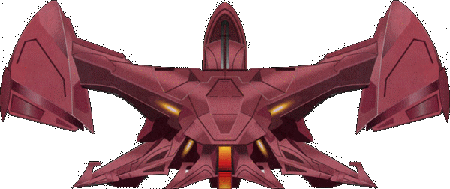
VULCAN SURVEY SHIP

|
Type: |
Planetary survey / landing craft |
|
Dimensions: |
|
|
Diameter: |
33.5 m |
|
Height: |
16.25 m |
|
Decks: |
1 |
|
Mass: |
600 tons |
|
Crew: |
2 - 8 |
|
Armament: |
None |
|
Defense Systems: |
Light Monotanium single hull |
|
Low level Structural Integrity field |
|
|
Warp Speeds: |
None - Impulse only |
|
Strength Indices: |
Beam Firepower: 0 |
|
(Galaxy Class = 1000) |
Torpedo Firepower: 0 |
|
Weapon Range & Accuracy: 0 |
|
|
Shield Strength: 0 |
|
|
Hull Armor: 0.3 |
|
|
Speed: 0.01 |
|
|
Combat Maneuverability: 5 |
|
|
Overall Strength Index:1 |
|
|
Diplomatic Capability: |
Grade 1 |
|
Expected Hull Life: |
10 years of active use |
|
Refit Cycle: |
Minor: 1 year |
|
Standard: 2 years |
|
|
Major: None |
|
|
Added Features: |
During the Earth's twentieth and twenty first centuries the Vulcans began conducting an extensive effort to explore nearby star systems. Initially intended to survey all nearby systems for any signs of life, by 2120 the Vulcans had decided to concentrate their efforts on discovering space faring civilizations like their own. These missions were carried out by large ships travelling at relativistic speeds on missions which could last for decades |
|
Once in a candidate system, the Vulcans needed vessels capable of conducting survey missions of the planets they encountered, including making landings to conduct surface reconnaissance and First Contacts if required. The vessel designed for this purpose was a form of large shuttle craft |
|
|
Like its parent craft, the lander used a form of primitive impulse drive for propulsion. The ship comprised a central section mounted on a base which contained the landing gear and a small airlock; the three engines were mounted on struts extending from the upper surface of the main section in a tripod arrangement. One relatively novel feature was the use of variable geometry on the engines and landing gear in order to allow the lander to operate across the maximum possible range of atmospheric and surface conditions |
|
|
Various models of the lander were employed; some were fitted as small cargo carriers to enable their parent ships to re-stock supplies from local planets, and several were fitted with a form of ram scoop to allow them to gather fuel from the atmospheres of gas giants in order to extend the range of the mission. But most were fitted to carry a small number of passengers and crew on extended atmospheric and surface research missions |
|
|
The lander operated successfully for many decades, conducting missions on over ninety new worlds and participating in first contact situations a total of sixteen times. The most notable of these occurred on a mission which passed through the Sol system in 2061; by this time the Vulcans were primarily interested in establishing relations with more advanced cultures, and had little interest in the inhabitants of the third planet in the system. That changed when the Phoenix made the first warp flight as the Vulcans passed through; realizing that Humans knew how to travel faster than light, the Vulcans sent a lander down to the launch site of the Phoenix where they made contact with Zephram Cochrane - a meeting which led to a renaissance for Humanity and the eventual founding of the United Federation of Planets |
Home
Crew Intel Office Aliens Ships Technology Protocols General Orders Directives